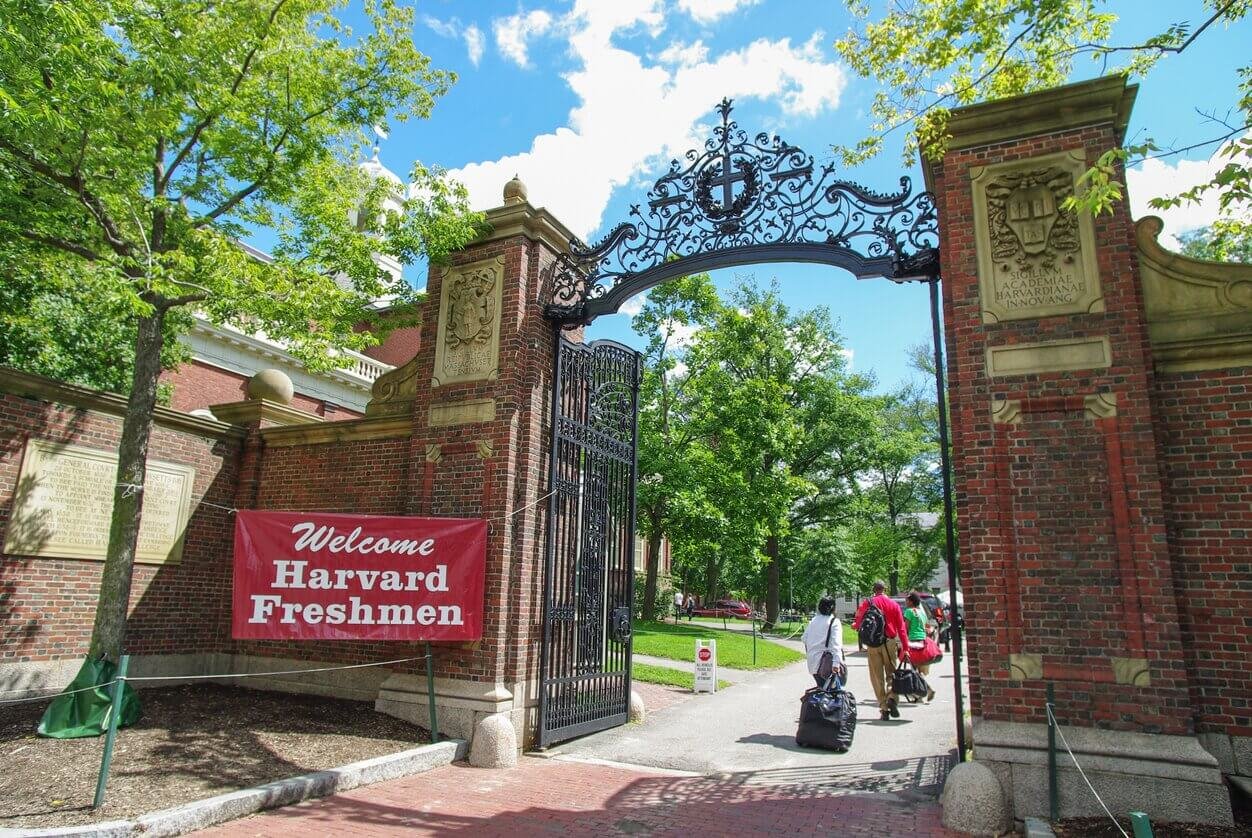How to Find Your Best-Fit Colleges
You open your laptop to create your college list, then your head begins to spin. Seems everybody’s got opinions about where you should go to college. Your mom was a Florida Gator and likes the idea of you staying in state. Uncle Joe is a proud Ohio State Buckeye and tells you there’s nothing like being in the stadium for a Big Ten showdown. Your guidance counselor is extolling the benefits of attending Oberlin, a small liberal arts college. Google searches are little help. The options are dizzying and you’re not sure where to begin.
Fortunately, if you’re reading this, you’ve landed in the right place. We’ve been helping students create solid, effective college lists for more than 30 years. In this blog, we’ll give you pointers on how to start, how to find your best-fit colleges, and how to narrow down your choices to craft a strategic list.
How Big (Or Small) Should My List Be?
One of the most common questions students ask is, “How many colleges should I apply to?” We advise starting with a broad list of about 15-20 schools to ultimately whittle down to 8-12. While the Common App has made it easier for students to apply to multiple schools, applying to any more than 12 or 13 is overkill. A strategic list should consist of mostly “target” (best-fit) schools, a few “stretch” schools, and a few “likely” schools. On the other end of the spectrum, some students make the mistake of applying to too few schools because their hearts and minds are set on a particular college or location. While that can work if all your schools are “safe” schools, we think it’s preferable to give yourself more options. But we’re getting ahead of ourselves…back to starting your college list.
The First Step: Identifying Your Best-Fit Colleges
As you traverse the college application process, you’ll hear the word “fit” used frequently. “Fit” really does matter and finding your best-fit colleges is the first and most important step in creating your ideal college list. Like most relationships, it really is a two-way street: you should have what the college is looking for and the college should have what you are looking for. Finding those matches starts with asking yourself these questions:
1. What Colleges Can I Get Into?
Yale may sound attractive, but before you put it on your list, you’ll want to check out their typical profile of admitted freshmen for the previous year to ensure that you have the scores (if you’re submitting them) and grades it takes to be accepted. Most schools provide these data and a simple Google search will lead you to the numbers you want, namely the mid-50% GPAs and SAT/ACT scores for admitted freshmen.
For example, a look at the University of Florida’s class of 2025 mid-50% score profiles will tell you that the most recent students admitted mostly fit within the following ranges: core GPA (recalculated) of 4.4 to 4.6, SAT of 1330 to 1470, and ACT of 30 to 34. That means that 25% of admitted freshmen scored 35 or above on the ACT, and 25% scored 29 or below. So, your chances of gaining admission to UF – or to any school, for that matter – are greatly enhanced if your GPA and SAT/ACT scores are at or above the midpoint of these ranges.
Of course, you still have a chance to be admitted if your scores and grades fall in the lower ranges. At that point, you’ll want to consider – honestly – what kind of academic challenge you’re looking for in college. Does being surrounded by students who may be higher achieving motivate you or frustrate you? The bottom line: Utilize the freshmen profile data to weed out those schools that may be too high of a reach (but you should have at least a few realistic stretch schools) and to hone in on those colleges that are more in your target range.
Keep in mind that colleges make admission decisions based on far more than your GPA and your test scores (if submitted). That’s just the starting point! From there, colleges examine so much more about you, especially curriculum rigor, extracurricular accomplishments, writing abilities, potential major, recommendations, demographics, and, for some colleges, ability to pay.
2. What Size and Type of School Am I Looking For?
Size matters, so it’s important to consider how you want to spend your college years. Do you love the idea of being part of a large state university, or would you be more successful in a private liberal arts college with much more personalized attention?
Public universities tend to be somewhat impersonal — and some of them are huge: What might be one of the nation’s largest in terms of total enrollment (and certainly the largest in the state of Florida) is the University of Central Florida, which has almost 72,000 total students, including 10,000 graduate students. Public universities also tend to have larger class sizes – there could be 300 or more students in lower-division lecture courses – but offer a broader choice of majors. Private universities tend to be smaller in total enrollment, have smaller class sizes, usually offer easier access to professors, and might have a particular focus, such as liberal arts, fine arts, engineering, or business.
There are colleges of every size out there and your initial list may include a wide selection. Starting to consider where your comfort zone lies will be helpful as you dig deeper by researching the schools, which we will get into in our blog titled 6 Steps to Create A Final College List.
3. Do I Know What I Want to Study?
If yes, it’s another key factor that can guide you. Identify which universities offer your chosen major and if they fit with your other parameters, then add them to your list. If you don’t know what you want to major in, no worries! That tells you you’ll want schools that offer a wide range of majors so you can “try on” various academic and career paths.
4. What Would Be My Ideal Location and Environment?
Believe it or not, it’s not just about academics. Your best-fit colleges should be someplace you’ll enjoy living for the next four years or so. Some things to consider: Do you prefer to be in-state or out of state? Do you want to be closer to home so you can frequently see your family? Or far enough away so you can “spread your wings” and experience more independence? Do you want to build snowmen in the winter, or do you immediately think, “no way am I living in that cold place”? Do you want to be near or in a big city? Or perhaps you relish the peacefulness of a more bucolic setting far from the bustling crowd. Something in between with easy access to a metro area, but a bit less tumultuous? Maybe you’ve always dreamed about living near the mountains or by the beach.
Something else to think about is the convenience and costs of travel to and from college. Will you be able to drive, or will travel involve long, pricey plane rides every time you want to return home?
Here, it may help to think about what you really don’t want or aren’t willing to put up with in terms of location. Eliminate any schools in that category.
5. What Kind of Student Culture and Campus Life Would I Thrive In?
What’s your vibe? At the heart of finding a college that’s a comfortable fit is choosing a school with a campus culture that promotes a student life that resonates with you.
Are you looking forward to the social scene? According to the Princeton Review’s annual ranking of party schools, you might enjoy a school like the University of Alabama or Syracuse. Maybe you prefer a quieter campus, one with plenty of arts and theater shows, or a place that has a particular religious ethos. Perhaps a school that’s more liberal or conservative in feel, or that’s more LGBTQ+-friendly, or where the diversity is exactly what you’re looking for, or where everyone spends time in the lab or library on weekends? Once you know what you want, an Internet search will yield plenty of matches.
Niche.com ranks schools in a variety of categories, including best student life based on student reviews and statistics from the U.S. Department of Education. Most recently, the University of Southern California, the UCLA, and the University of Wisconsin topped the list of colleges that have a “positive, fun, and friendly student culture and a vibrant campus community.”
6. What’s My Budget?
One final factor to consider: money! Public versus private, in-state versus out-of-state may all come down to what your family can afford and your willingness to take on loans. To help you evaluate which colleges give you the best bang for the buck, check out Money.com’s rankings based on over 20,000 data points. The rankings take into account such elements as potential student debt, standardized test scores, acceptance rate, and graduation rate. And every college has a net price calculator on its website (check out Emory’s net price calculator, for example) to help you determine how much attending will likely cost your family.
What’s Next?
Now that you’ve determined your priorities and have a better idea about the kind of college that would be your best fit, you can utilize your high school’s search tools like Naviance or SCOIR, or the College Board’s Big Future, to start compiling the first draft of your list.
We’re here to share our 30-plus years of experience and knowledge with you and help you throughout the college selection and application process. So, give us a call when you’re ready to get started.
Next up, read 6 Steps to Create A Final College List to gain tips for narrowing down your list in order to optimize your opportunities.
